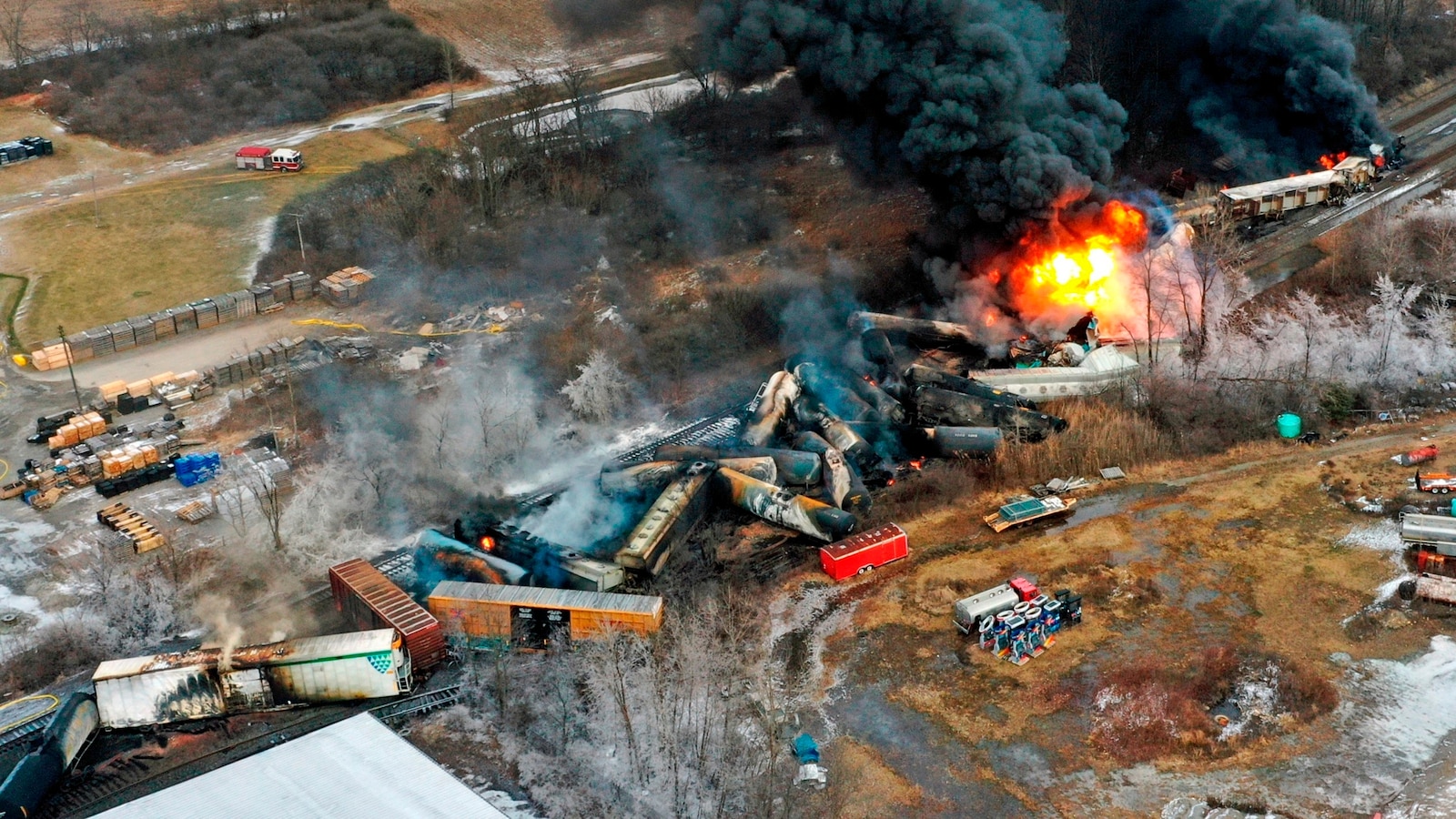

East Palestine Train Derailment Spread Pollution to 16 States: Study
A new study has revealed that the toxic chemicals released from the February 3rd train derailment in East Palestine, Ohio, spread to 16 states across the eastern US. The study, conducted by researchers from Carnegie Mellon University, utilized air monitoring data collected from the US Environmental Protection Agency (EPA) and analyzed the dispersal patterns of the chemicals. The study focused on the chemical vinyl chloride, which was intentionally burned off to prevent a larger explosion, as well as other chemicals like butyl acrylate, isobutylene, and ethylhexyl acrylate. The research found that while the chemicals quickly dissipated in the immediate area, they were transported by wind currents and deposited in various locations, some hundreds of miles away. While the study doesn't establish a clear link between the chemicals and health problems, it emphasizes the potential for long-term impacts and the need for further investigation and monitoring. The study also points to the need for improved safety protocols and better preparedness for similar incidents. This research adds to the growing concern about the long-term environmental and health implications of the East Palestine derailment, highlighting the need for continued monitoring and investigations.
Summary
"The study confirms the widespread dispersal of toxic chemicals from the East Palestine train derailment and underscores the need for further monitoring and research to assess potential long-term impacts on the environment and human health."
Updated at: 06.21.2024
Categories




